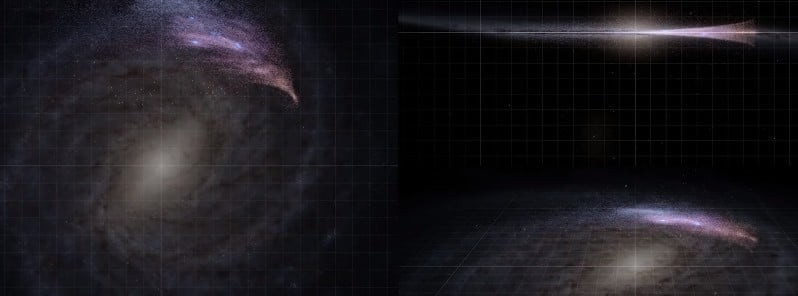Gaia data release 3: The most detailed Milky Way survey to date

On June 13, 2022, ESA releases its third and new full data set made by the Gaia observatory located at L2 Lagrangian point – about 1.5 million km or 930 000 miles from Earth. Among other things, this catalog includes chemical compositions, stellar temperatures, colors, masses, ages, and the speed at which stars move towards or away from us.
- Astronomers describe strange ‘starquakes’, stellar DNA, asymmetric motions, and other fascinating insights in this most detailed Milky Way survey to date.
Since its launch in 2013 ESA’s Gaia observatory has been mapping our galaxy from Lagrange point 2, creating the most accurate and complete multi-dimensional map of the Milky Way.
By now two full sets of data have been released, the first set in 2016 and the second one in 2018. These data releases contained stellar positions, distances, motions across the sky, and color information, among others.
Now, on June 13, 2022, a third and new full data set was released.
This catalog includes new information, including chemical compositions, stellar temperatures, colors, masses, ages, and the speed at which stars move towards or away from us.
Much of this information is revealed by spectroscopy, a technique in which the starlight is split into its constituent colors (like a rainbow).
It also lists special subsets of stars, like those that change brightness over time.
Also new in this data set is the largest catalog yet of binary stars in the Milky Way, thousands of Solar System objects such as asteroids and moons of planets, and millions of galaxies and quasars outside the Milky Way.
One of the surprising discoveries coming out of Gaia data release 3, is that Gaia is able to detect starquakes – tiny motions on the surface of a star – that change the shapes of stars, something the observatory was not originally built for.
Gaia found strong nonradial starquakes in thousands of stars and revealed such vibrations in stars that have seldomly been seen before. These stars should not have any quakes according to the current theory, while Gaia did detect them at their surface.
“Starquakes teach us a lot about stars, notably their internal workings. Gaia is opening a goldmine for ‘asteroseismology’ of massive stars,” said Conny Aerts of KU Leuven in Belgium, who is a member of the Gaia collaboration.
Huge progress has been made by measuring ~60 000 reflectance spectra (color and composition) of Solar System asteroids, as compared to 6 000 spectra previously obtained for 4 500 asteroids.
This marks a breakthrough in the analysis of the chemical composition of asteroids, which – together with their orbits – gives precious information about their origin and classification.
By far the largest group of Solar System objects in Gaia’s data release 3 are 154 741 asteroids for which Gaia has determined their orbits. Depending on their orbits one can distinguish different groups of asteroids.
Data release 3 also shows us the speed at which more than 30 million Milky Way stars move towards or away from us. This is called ‘radial velocity’ and it is providing the third velocity dimension in the Gaia map of our galaxy.
We can now see how the stars move over a large portion of the Milky Way’s disc. Thanks to Gaia, we can clearly see that the stars on average do not rotate with circular motions around the center of the galaxy.
This is because our Milky Way is not symmetric around its axis. It is a ‘barred’ spiral galaxy, and the motions reveal the orientation of the central bar.
Gaia was launched to the L2 Lagrangian point on December 19, 2013, with the mission to create an extraordinarily precise three-dimensional map of more than a thousand million stars throughout our Milky Way galaxy and beyond, mapping their motions, luminosity, temperature and composition.
This huge stellar census will provide the data needed to tackle an enormous range of important questions related to the origin, structure and evolutionary history of our galaxy.
The new Gaia data can be accessed at https://gea.esac.esa.int/archive/
Featured image credit: ESA/GAIA

Commenting rules and guidelines
We value the thoughts and opinions of our readers and welcome healthy discussions on our website. In order to maintain a respectful and positive community, we ask that all commenters follow these rules.